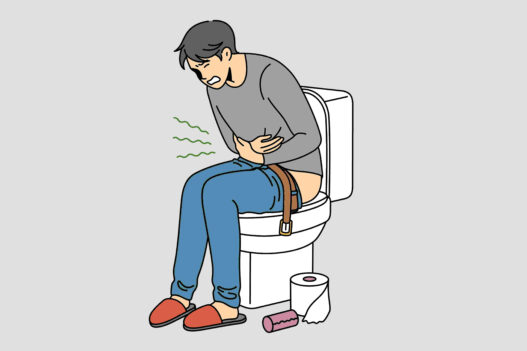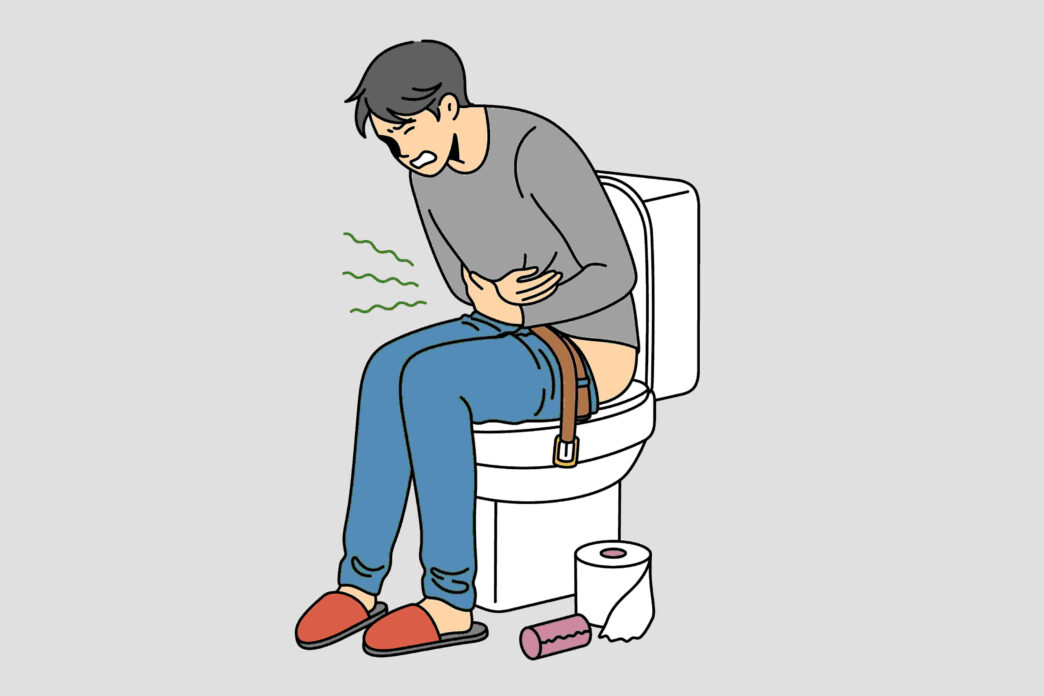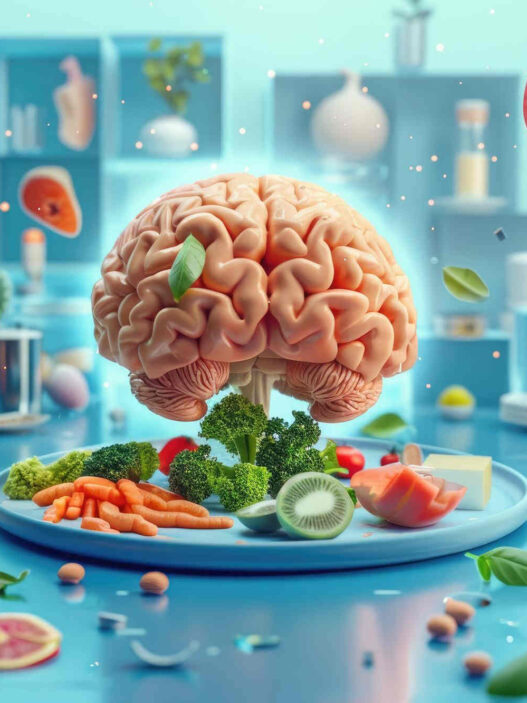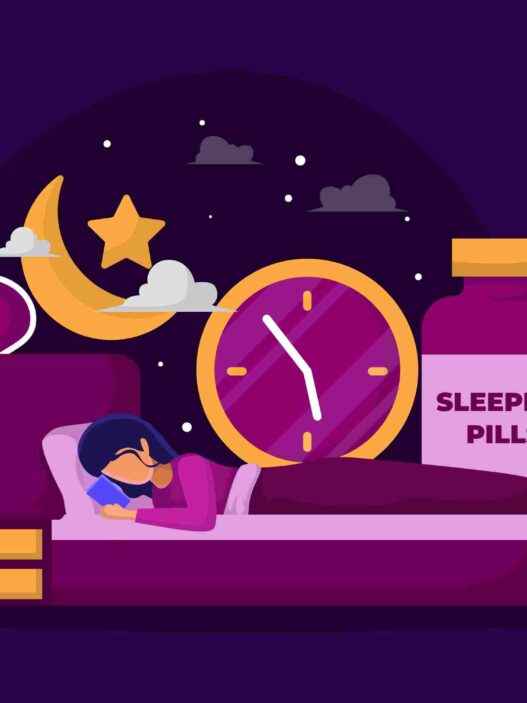What is Chronic Idiopathic Constipation?
Chronic idiopathic constipation (CIC), previously known as functional constipation, is a common bowel disorder characterized by constipation and difficult, incomplete, and infrequent defecation (1, 2). The term ‘idiopathic’ means that the cause is yet unclear or unknown. Chronic idiopathic constipation does not have any hormonal or anatomical cause but could be related to neurological or psychological causes or a psychosomatic disorder affecting digestion and water absorption in the colon (2). It is one of the most common GIT disorders that affects 35 million Americans and has a prevalence of 14% globally. Functional or Chronic idiopathic constipation is more common in women and in the elderly (3). Here we discuss the types of constipation, the treatment of constipation, and how a healthy lifestyle might help. Whether to increase fiber, fluid, or exercise for constipation? Which fiber or exercises to relieve constipation?
The Rome IV criteria help in the diagnosis of Chronic Idiopathic Constipation. Also, simple laboratory tests and physical examinations are conducted to rule out secondary causes. Other secondary causes of constipation include electrolyte imbalance, hypothyroidism, diabetes, hypercalcemia, etc. (5). Constipation is also a common side effect of several medicines such as iron supplements, aluminium antacids, antihistamines, etc. In case of any recent onset sudden constipation with alarming symptoms, one must check for colorectal cancer. If a patient shows any Red Flag Symptoms such as Sudden weight loss or Rectal bleeding, it is important to check for other aetiologies, including malignancy (4, 5).
Types of Chronic Constipation
Chronic idiopathic constipation is classified according to the colonic transit time as –
- Normal Transit Constipation
- Slow Transit Constipation – is also associated with IBS
- Defecatory disorders constipation – anatomical disruption leading to obstructed defecation (4, 5).
CIC vs IBS-C
How is Chronic Idiopathic Constipation different from IBS-C?
There has been an overlap in the symptoms and physiology of CIC and IBS-C as both conditions have chronic constipation and hence it is important to distinguish between the two. The overlapping symptoms include abdominal discomfort, bloating, and constipation. However, IBS patients also experience abdominal pain which is not seen in CIC (6).
Lifestyle factors and Chronic Idiopathic Constipation
A study reviewed the effect of lifestyle modifications including fiber, fluid intake, and exercise for constipation in managing chronic idiopathic constipation. Also, the recommendations of various International guidelines were reviewed and the major findings reported by the authors are highlighted below (1) –
Fiber Intake for Constipation
As far as fiber intake is concerned, the studies indicate a clear positive impact on chronic idiopathic constipation. This is also recommended strongly as per European, French, Spanish, and Korean guidelines.
When comparing studies reporting evidence for psyllium husk with dried plums in mild to moderate constipation, the dried plums demonstrated a better efficacy (1).
Fluid Intake for Constipation
Water and fluid intake is, in general, known to have a positive effect on relieving constipation. The European guidelines reported a positive impact of increasing fiber intake only when combined with increased fluid intake (1).
Interestingly, increasing just the fluid intake was effective only in dehydrated patients as per both European and French guidelines. Further, the French guidelines recommended the positive effects of water rich in magnesium. The same has also been mentioned in Korean guidelines. However, one needs to be careful in patients with impaired renal function as there is a risk of hypermagnesemia (1).
Exercise for Constipation
Exercise for constipation? Which exercises relieve constipation? Well, exercise had neither positive nor negative effects on chronic idiopathic constipation as per both European and French guidelines (1). Though other guidelines (Spanish and Korean) reported a positive effect of exercise but the evidence was indirect and not strong. This is because a sedentary lifestyle has been linked with constipation.
Other lifestyle factors
Lifestyle factors other than fluid, fiber, and exercise for constipation were evaluated. As per the French guidelines, overeating had a positive effect only in undernourished patients (1). In addition, foods other than fiber such as milk, cheese, rice, eggs, etc. do not benefit constipation. Further, a consistent routine of going to the toilet, and the exact position in the toilet was reported to have a positive impact.
Treatment of Chronic Idiopathic Constipation
Non-prescription agents (Over the Counter)
These are the agents that are available over the counter and do not require prescription hence are preferred as the first choice by the patients in addition to the lifestyle interventions.
Bulking Laxatives
Bulking laxatives include Insoluble fiber such as Bran and Soluble fiber like Psyllium. Insoluble fiber has been associated with bloating, flatulence, and cramping as adverse effects. Usually, any fiber supplement, whether soluble or insoluble, needs to be started gradually and sufficient water is required to be taken to prevent any GI side effects. If a patient does not respond to a fiber diet, the next step is laxative (4).
Osmotic Laxatives
Osmotic laxatives include agents such as polyethylene glycol (PEG) and lactulose. The consensus among all guidelines is on the efficacy of polyethylene glycol (PEG) which is mostly laxative of first choice and more effective in the elderly with fewer side effects. Another popular choice is lactulose. Osmotic laxatives contain poorly absorbed molecules that draw water into the intestinal lumen, thus softening stool and increasing intestinal transit (1, 4). There are several laxatives available. There are several newer agents available. However, your physician will determine which laxative is best for you.
Stimulant Laxatives
Examples of stimulant laxatives are bisacodyl and senna which help relieve constipation in patients with chronic idiopathic constipation (4).
Prescription Agents
These include laxatives that can only be taken on the advice of a health care provider on prescription. Usually, when patients are not relieved with non-prescription agents, these are prescribed.
The prescription laxatives include Prosecretory agents or Secretagogues such as Lubiprostone and Linaclotide, Bile acid inhibitors such as Elobixibat, and Serotonergic agents such as Prucalopride. There is weak evidence for the use of probiotics in chronic constipation and strong evidence for secretagogues (4, 6).
Final Words
Overall, lifestyle modifications, such as increasing fiber mainly dietary fiber are the first step in managing chronic idiopathic constipation. Exercise for constipation demonstrated no beneficial effects. Treatment with laxatives is recommended only when the functional constipation is not resolved with lifestyle changes (3). A high-fiber diet and polyethylene glycol laxative are the treatment of choice and are available over the counter (3). Chronic idiopathic constipation patients use conventional laxatives, and the most popular first-line treatment is osmotic laxatives including polyethylene glycol (PEG), etc. However, many of the patients are resistant to conventional laxatives, hence a variety of new treatment options have emerged. Any laxative treatment, however, must be taken only on the advice of a healthcare professional.
Sources
- https://www.ncbi.nlm.nih.gov/pmc/articles/PMC8547593/#:~:text=Chronic%20idiopathic%20constipation%20(CIC)%20is,represents%20a%20heavy%20economic%20burden.
- https://en.wikipedia.org/wiki/Functional_constipation
- https://pubmed.ncbi.nlm.nih.gov/29996755/
- https://www.ajmc.com/view/update-on-the-management-of-chronic-idiopathic-constipation
- https://www.hkmj.org/system/files/hkmj_187692.pdf
- https://journals.lww.com/ajg/fulltext/2014/08001/american_college_of_gastroenterology_monograph_on.2.aspx.











